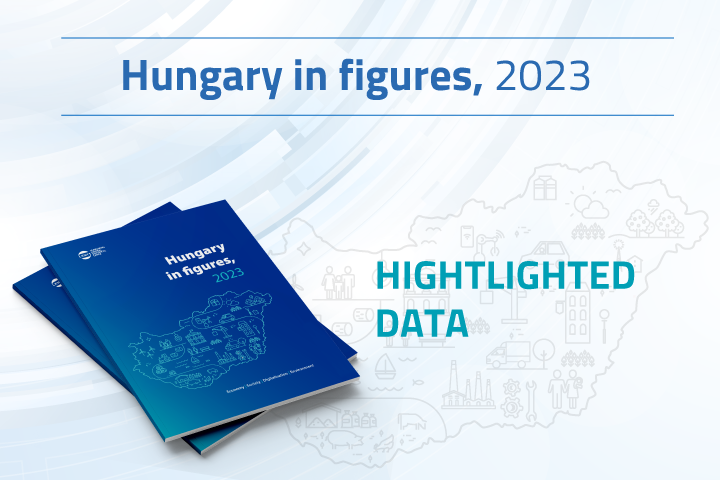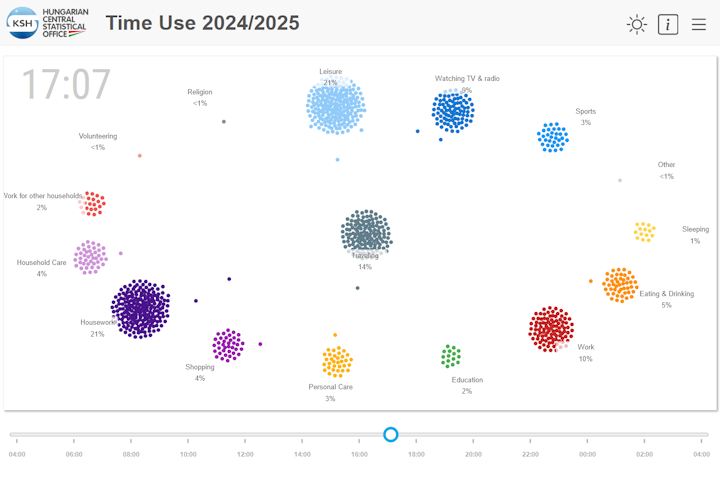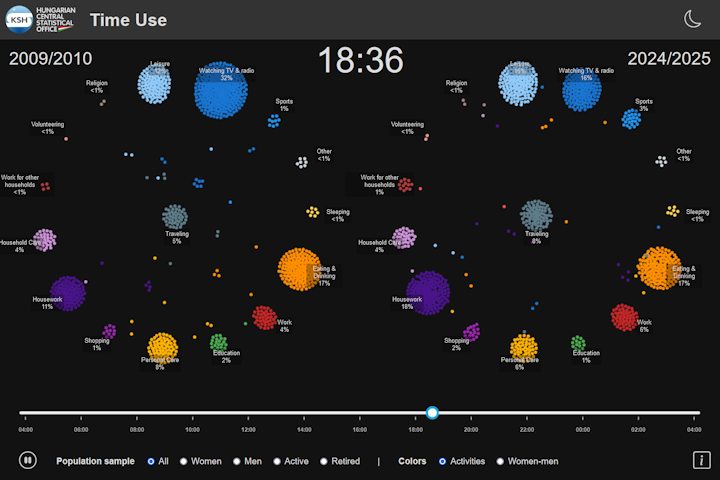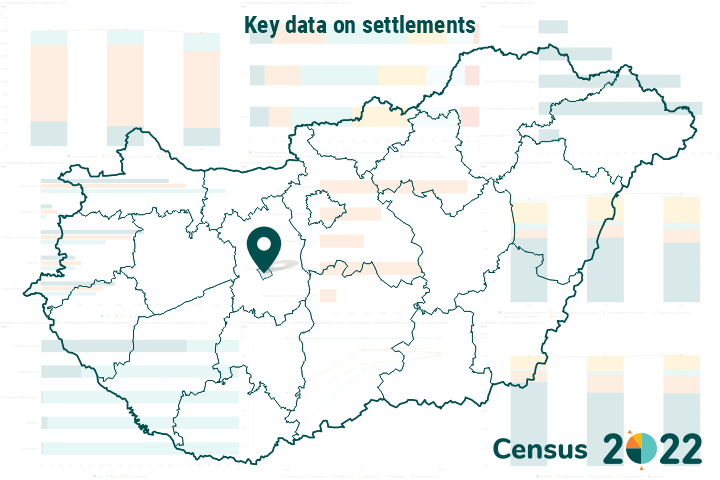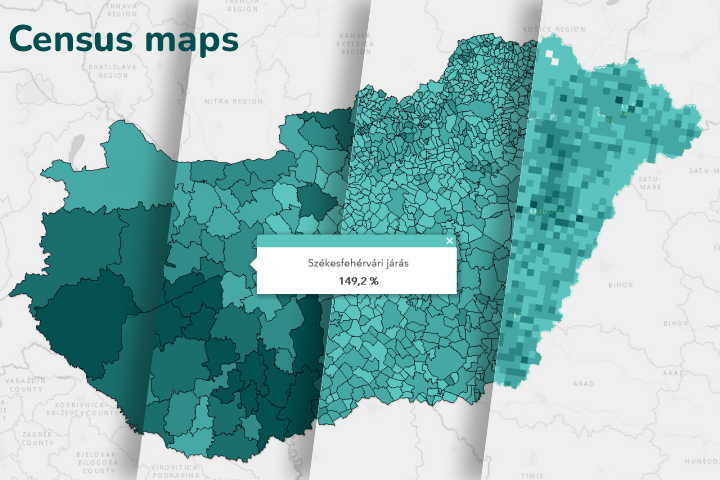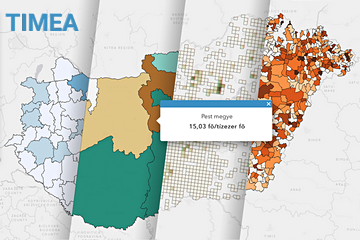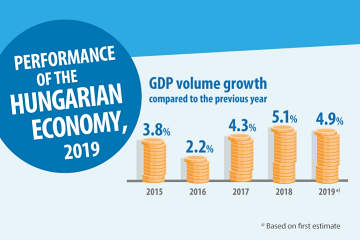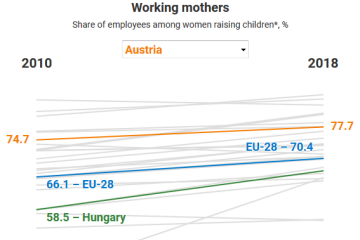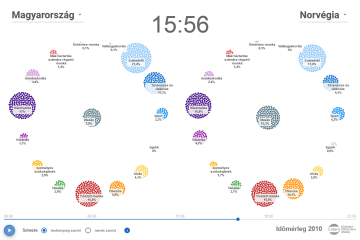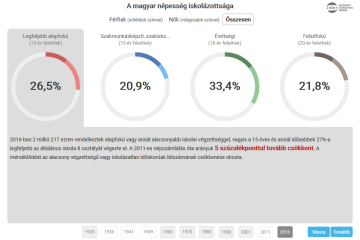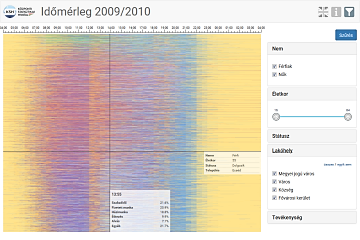Labour
There are several sources of labour market data: the labour force survey, which collects data on the economic activity of the population (unemployment, employment) and the institutional data collections and administrative data, which serve as a source to illustrate, for example, the characteristics of earnings hours worked, average staff number, job vacancies, labor costs, strike events. The statistical domain also includes the calculation of the real wage index and the publication of the minimum wage and the guaranteed minimum wage data.
Key figures
Unemployment rate
Indicator description
The ratio of unemployed persons to the economically active population of corresponding age. The indicator can be calculated for different age groups, the default is the age group 15–74. Further selected age groups: 15–64, 15–24, 25—54 and 55–74.
Source of data:
Summary Tables (STADAT)
Last data for period: October 2025
Employment rate
Indicator description
The ratio of employed persons to the population of corresponding age. The indicator can be calculated for different age groups, the default is the age group 15–64. Further selected age groups: 15–74, 15–24, 25—54, 55–64 and 20–64.
Source of data:
Summary Tables (STADAT)
Last data for period: October 2025
Changes in average gross monthly earnings of full-time employees
Indicator description
The indicator shows the changes in average gross monthly earnings of full-time employees compared to the same period of the previous year. The data refer to the full range of employers (all enterprises with employees, non-profit organisations, all budgetary institutions). Average earnings are the ratio of wage costs and average staff number. The components of earnings are basic wage, wage supplements, additional pay, bonuses, premium, salary for the 13th and further months. Gross earnings include personal income tax, health insurance and pension contributions, as well as labour market contribution.
Source of data:
Summary Tables (STADAT)
Last data for period: October 2025
Share of job vacancies
Indicator description
Job vacancies at an employer are jobs which are newly established or became vacant, or jobs expected to become vacant in the near future (within 3 months), for which employers had already taken active steps to fill as soon as possible. Posts to be filled only by subcontractors, labour force lending, casual work assignment or internal transfer of existing employees, unpaid apprentices or public workers are not considered as job vacancies. Furthermore, posts reserved for those who are in employment relationship, but are not obliged to work are neither considered job vacancies. Data refer to enterprises employing at least 5 persons, all budgetary institutions and non-profit organisations that are important in respect of employment.
Source of data:
Summary Tables (STADAT)
Last data for period: Q3 2025
Featured
Average gross earnings were HUF 692,700, being 8.7% higher than a year earlier; Earnings, October 2025
Full-time employees’ average gross earnings were HUF 692,700 and average net earnings reached HUF 482,400 in October 2025. Average gross earnings grew by 8.7%, net average earnings increased by 10.0% and real earnings were 5.5% higher than a year earlier. The increase in net average earnings exceeded the growth of the gross average earnings due to the higher amount of family allowance introduced as of 1 July 2025, and the allowance for mothers raising three children introduced as of 1 October 2025. Median gross earnings were HUF 575,000, and median net earnings were HUF 401,100, surpassing the value for the same period of the previous year by 9.4% and 10.3%.
HCSO Monitor
The collection of interactive figures provides up-to-date information on the latest domestic and international socio-economic trends. The decisive part of the figures included in HCSO Monitor are downloadable in both image and data formats (PNG, SVG and CSV). Feel free to browse the data in HCSO Monitor, updated many times a week!
4 million 674 thousand people in employment, unemployment rate at 4.4%; Employment and unemployment, October 2025
In October 2025, the average number of employed persons aged 15–74 was 4 million 674 thousand. The number of unemployed persons was 217 thousand and the unemployment rate was 4.4%.
International Men’s Day, 19 November 2025
International Men’s Day is celebrated every year on 19 November all over the world. The idea originates from the 1960s, however it set off in its present form in 1999 with the support of the UN, from Trinidad and Tobago from the Caribbean region. Its purpose is to focus on the role men are playing and the social challenges they face. It is more and more recognized in Hungary, too, where its health maintenance and role of fathers features are highlighted on this day.
Hungary in figures, 2023 – Highlighted data
At the aid of our infographic made using the main data in our publication titled Hungary in figures, 2023, we give a comprehensive picture of the socio-economic state of Hungary. There were 1,073 females per thousand males in Hungary at the beginning of 2024. Life expectancy at birth rose to the highest level yet in 2023 (to 73.4 years for males and 79.6 years for females). Over a quarter of manufacturing output was made up by the manufacture of transport equipment.
Statistical Yearbook of Hungary, 2024
The yearbook provides an overview of Hungary's demographic, social and economic trends, environmental characteristics and their changes over time, with the help of tens of thousands of data in some 500 tables, charts and maps. In the chapter devoted to earnings and incomes, it is a novelty compared to previous years that net earnings in which allowances and types of exemptions are accounted for, too, came into focus from 2019. In the number of employees, people working in working time shorter than 60 working hours per month are also taken into account. In addition, the theme of environment is completed with areas declared world heritage sites by UNESCO.
Yearbooks, pocketbooks, data repositories
A new sub-page has been added to the HCSO website, more than 400 yearbooks, pocketbooks and data collections, a total of a hundred thousand pdf format pages close to 150 thousand excel tables and several thousand static and interactive graphs and maps are available for download. The sub-page offers the possibility of filtering these yearbooks, pocketbooks and data collections by reference year, serial name, format (PDF, XLS) and supplements (graphs, maps). Users may compile their own list of publications based on the year- and pocketbooks, data collections, adequate to their interests.
Snapshots, 2024 - Labour market
Employment remained essentially unchanged in 2024, with the number of unemployed people increasing compared to the previous year, but with more potentially available labour and fewer vacancies to fill. The significant rise in average gross earnings of 13.2% and the slower rise in the consumer price index resulted in a 9.0% increase in purchasing power of wages.
Hungary 2024 – The Labour Market
Our series of infographics, based on the most important data from the Hungarian-language publication Hungary, 2024 provides a comprehensive picture of the social and economic state of our country and the main characteristics of our environment. The next infographic in the series presents the main data of the labour market. The English extract from the publication is available here: Hungary, 2024, and the full Hungarian-language version here: Magyarország, 2024.
Hungary, 2024
Hungary’s GDP increased by 0.5% amid global challenges in 2024. The performance of goods-producing industries lessened, while that of service-providing ones rose, which shows the duality of economic trends. Household consumption picked up, which was considerably encouraged by the purchasing power of earnings growing again with the inflationary wave calming down. Besides, the data series reveal that the level of employment reached another peak.
Labour market trends, Quarter 3 2023
Employment continued to expand in the third quarter of 2023: the average number of employed persons in the 15-74 age group was 25 thousand higher than in the same period of the previous year, at 4 million 737 thousand. At the same time, the number of unemployed persons increased by 22 thousand and reached 200 thousand. The decline in the purchasing power of earnings stopped in the last month of the quarter. Average gross monthly earnings reached HUF 557 600.
Related themes
- Censuses
- Income and consumption
- International data
- Men and women
- Population and vital events
- Regional statistics
- Time use
- The young and the elderly
Methodological information
First releases |
Latest release | Next release |
|---|---|---|
| Employment, December 2023 | 26/01/2024 | – |
| Earnings, October 2025 | 19/12/2025 | 23/01/2026 |
| Unemployment, December 2023 | 26/01/2024 | – |
| Employment and unemployment, October 2025 | 28/11/2025 | 07/01/2026 |
Census data |
Census |
|---|---|
| Census 2022 database | Population census 2022 |
| National regional data | Population census 2011 |
| 5. Economic activity of the population | Microcensus 2016 |
| 6. National and county data | Population census 2001 |
| 7. Employment and daily commuting | Population census 2001 |
| 9. Unemployed and persons not unemployed seeking for a job | Population census 2001 |
| 14. Daily travel of the persons in employment | Population census 2001 |
| 16. Social stratification | Population census 2001 |
| 20. Living conditions of the elderly population | Population census 2001 |
| 21. Data on statistical subregions | Population census 2001 |
| 28. Agricultural activity – its role in the employment of the population | Population census 2001 |
| 29. Daily travel for work | Population census 2001 |




